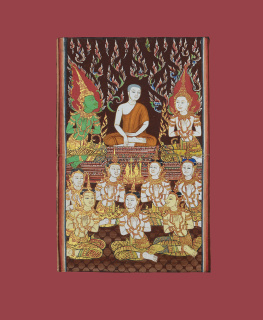READINGS OF THE VESSANTARA JTAKA
COLUMBIA READINGS OF BUDDHIST LITERATURE
COLUMBIA READINGS OF BUDDHIST LITERATURE
SERIES EDITOR: STEPHEN F. TEISER
This series is published with the sponsorship of the Dharma Drum Foundation for Humanities and Social Science Research.
Readings of the Lotus Stra, Stephen F. Teiser and Jacqueline I. Stone, editors
Readings of the Platform Stra, Morten Schltter and Stephen F. Teiser, editors
READINGS OF THE
VESSANTARA JTAKA
Edited by Steven Collins
COLUMBIA UNIVERSITY PRESS NEW YORK

Columbia University Press
Publishers Since 1893
New York Chichester, West Sussex
cup.columbia.edu
Copyright 2016 Columbia University Press
All rights reserved
Library of Congress Cataloging-in-Publication Data
E-ISBN 978-0-231-54100-8
Names: Collins, Steven, 1951 editor.
Title: Readings of the Vessantara Jataka / edited by Steven Collins.
Description: New York : Columbia University Press, 2016. | Series: Columbia readings of Buddhist literature | Includes bibliographical references and index.
Identifiers: LCCN 2015012734 | ISBN 9780231160384 (cloth : alk. paper) | ISBN 9780231160391 (pbk.) | ISBN 9780231541008 (electronic)
Subjects: LCSH: Tipitaka. Suttapitaka. Khuddakanikya. Jataka.
VessantarajatakaCriticism, interpretation, etc.
Classification: LCC BQ1470.V487 R43 2016 | DDC 294.3/82325dc23
LC record available at http://lccn.loc.gov/2015012734
A Columbia University Press E-book.
CUP would be pleased to hear about your reading experience with this e-book at .
Cover design: Noah Arlow
Cover image: Vessantara Jataka , Chapter 4, Vessantara, Maddi, Jali and Kanha Enter the Forest. Thai, late 19th century, pigments on wood. 17 1/2 21 5/8 in.
Doris Duke Charitable Foundations Southeast Asian Art Collection (date and mode of acquisition unknown); Walters Art Museum, 2002, by gift. Accession number 35.234.
References to websites (URLs) were accurate at the time of writing. Neither the author nor Columbia University Press is responsible for URLs that may have expired or changed since the manuscript was prepared.
CONTENTS
Steven Collins
Louis Gabaude
Patrice Ladwig
Justin Thomas McDaniel
Katherine A. Bowie
Leedom Lefferts and Sandra Cate
Lilian Handlin
Christoph Emmrich
W HEN STEPHEN F. TEISER asked me, some years ago, to consider editing a volume on a Pali text for the Columbia Readings of Buddhist Literature series, I immediately thought of the wonderful Vessantara Jtaka , a text widely known in name at least, but in my view sadly underappreciated. From the wide range of textual versions available from all over Asia, and from the frequent mention of it in ethnographic reports, we know it to be a central text in all of Asian Buddhism, indeed the central text in the Theravda Buddhism of South and Southeast Asia. It has been, in some (notably urban) contexts, eclipsed only in modern times, and indeed mostly among Buddhist Modernists, by the Life of the Buddha. It is a striking text, full of strong emotions and drama, and it is morally both very striking and challenging.
Readers should obviously have read the story before undertaking this volume. While it was being prepared, the contributors knew only the translation by Margaret Cone, published in 1977 as Margaret Cone and Richard Gombrich, The Perfect Generosity of Prince Vessantara: A Buddhist Epic translated from the Pali and illustrated by unpublished paintings from temple murals . After a time this book went out of print, but in 2011 the Pali Text Society republished the translation, without the illustrations, as The Perfect Generosity of Prince Vessantara . (Although this book is hardback, it is sold at paperback price.) As this volume was in its final stages of preparation we learned of another translation, by Sarah Shaw, which appears in in the third volume of Naomi Appleton and Sarah Shaw, The Ten Great Birth Stories of the Buddha (Chiang Mai: Silkworm, 2015). Shaws introduction to her Vessantara translation is very helpful and thought-provoking, and both it and her translation could well be read in conjunction with this book.
Neither this collective volume nor the Appleton/Shaw book is the last word on the great Vessantara story (who could have the last word on Hamlet ?), but they do, we hope, constitute the beginning of a realistic appreciation of the complexities and beauties of the text (indeed of the variety of texts called Vessantara, not merely the Pali), and of the extraordinary variety of contexts for ritual performance and artistic representation of it.
Steven Collins
University of Chicago
Steven Collins
I F ONE approaches Buddhism from a perspective that sees it as a world religion comparable to others such as Christianity and Islam, then its most important narrative will be the life of the Buddha, comparable to the lives of Jesus and Muhammad. The story of the Buddhas life is standardly used to begin both introductory books and university courses on Buddhism. which suggests that the unthinking classification of Buddhism as a religion immediately closes down the possibility of reading Buddhist literature, or some of it, as art, as itself both giving voice to and reflecting critically on a heterogeneous set of human, civilizational aspirations and achievements.
The form of Buddhism with a scriptural corpus in Pali, a form of Middle Indo-Aryan, that has become predominant in Sri Lanka and Southeast Asia (with a significant twentieth-century revival in Nepal) has in modern times been known as Theravda, the Way of the Elders, those who recited andallegedlyfixed forever the Pali Canon at three Councils (literally recitings, sagyana ) in India after the death of the Buddha.
The sequence of events, and of lives, leading to the attainment of fully enlightened buddha status has a determinate form, which is important to ones reading of the Vessantara Jtaka . Each candidate for this status must first, eons before his own enlightenment, meet a buddha and at that time make an aspiration to achieve fully enlightened buddhahood. The buddha at that time then makes a prediction of his future buddhahood. In the sequence of lives that culminated in Gotama Buddha, the aspiration was made by an ascetic called Sumedha to the then-Buddha Dpakara, who predicted his future enlightenment as Gotama. Later in this introduction, and throughout the book, readers will be asked to reflect on whether this aspiration is for all Buddhists or just those rare and unusual beings, bodhisattas.
The Vessantara (pronounced Vessntara) story, in many different forms, is known throughout the Buddhist worlds of Asia, where the protagonists name in Sanskrit is Vivantara (pronounced Vishvntara); in Tibetan, Dri med kun ldan (pronounced Drimay knden); in many, especially East Asian versions, it is Sudna (pronounced Sudna). The chapters that follow are concerned, overall, with two things: first, the interpretation of the Vessantara story itself, its characters, narrative dynamics, and ethics; second, with the contexts, ritual-performative and representational, in which the story is told: recited, painted on or woven into textiles, orin various waysacted out as a form of theater. As do other books in this series, this volume presupposes no previous specialized preparation.
WAS THERE AN ORIGINAL VERSION? MULTIPLE TELLINGS, AUTHORITATIVENESS, AND QUESTIONING
I want to begin this section by mentioning, and then dismissing, an attempt by the German scholar Alsdorf to find an original version of the story. In an article published in 1957, which remains very valuable from a philological point of view, Alsdorf argued, in the words of the English summary given at the end of the article, that by editing and rearranging the verses
Next page

















